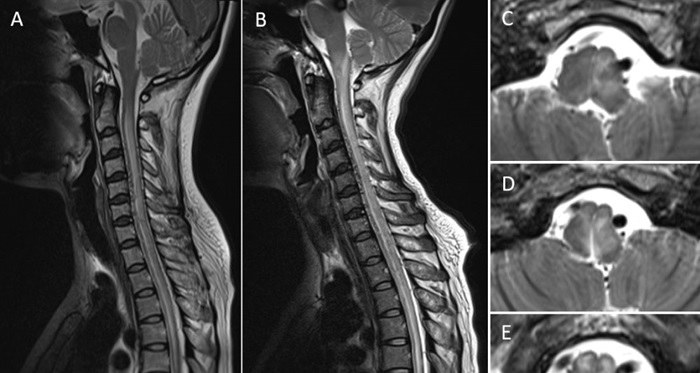Spinal hypotension, also known as orthostatic hypotension, occurs when there is a significant drop in blood pressure upon standing or sitting up. This condition is particularly relevant in individuals with spinal cord injuries or disorders, but it can also be associated with other medical conditions and certain treatments. Understanding the primary causes of spinal hypotension is crucial for effective diagnosis and management. In this article, we will explore the six main causes of spinal hypotension, providing insights into their mechanisms, symptoms, and management strategies.
1. Spinal Cord Injuries
Spinal cord injuries (SCIs) are one of the most common causes of spinal hypotension. The autonomic nervous system, which regulates blood pressure, can be disrupted due to the injury, leading to impaired vasoconstriction and reduced cardiac output when a person changes position.
SEE ALSO: What Are The Symptoms of Supine Hypotension Syndrome?
Mechanism
Loss of Autonomic Regulation: SCIs can damage the pathways that control the autonomic nervous system, affecting the sympathetic nervous system’s ability to constrict blood vessels.
Impaired Venous Return: Muscle paralysis below the level of injury can reduce the muscle pump action, leading to decreased venous return to the heart.
Symptoms
Dizziness and Lightheadedness: Common when standing up quickly.
Fainting: In severe cases, the individual may lose consciousness.
Fatigue: Persistent low blood pressure can cause general fatigue and weakness.
Management
Gradual Position Changes: Encouraging gradual changes in position can help prevent sudden drops in blood pressure.
Compression Garments: These can improve venous return and stabilize blood pressure.
Medications: Fludrocortisone or midodrine may be prescribed to increase blood pressure.
2. Autonomic Dysreflexia
Autonomic dysreflexia is a condition often seen in individuals with SCIs above the T6 level. It is characterized by an overreaction of the autonomic nervous system to stimuli below the level of injury, causing severe hypertension, which can be followed by a compensatory drop in blood pressure.
Mechanism
Noxious Stimuli: Triggers such as bladder distension, bowel impaction, or skin irritation can cause an exaggerated autonomic response.
Reflexive Bradycardia: The body’s attempt to counteract the hypertension often leads to bradycardia and subsequent hypotension.
Symptoms
Severe Headache: Due to the sudden increase in blood pressure.
Flushing and Sweating: Above the level of the injury.
Nasal Congestion: As a response to the autonomic disturbance.
Management
Identifying and Removing Triggers: Quickly addressing the cause of the autonomic dysreflexia.
Medications: Antihypertensive drugs may be administered in severe cases.
Preventative Measures: Regular bowel and bladder management to avoid triggers.
3. Medications
Certain medications can induce spinal hypotension by altering the autonomic nervous system or vascular tone. These include antihypertensives, diuretics, and medications used to manage neurological conditions.
Mechanism
Vasodilation: Medications such as alpha-blockers and nitrates can cause significant vasodilation, leading to a drop in blood pressure.
Decreased Blood Volume: Diuretics reduce blood volume, contributing to hypotension.
CNS Depression: Some medications can depress the central nervous system, affecting autonomic regulation.
Symptoms
Postural Dizziness: Common when moving from a lying or sitting position to standing.
Weakness and Fatigue: Due to reduced blood flow to muscles and organs.
Blurred Vision: Can occur if hypotension affects ocular perfusion.
Management
Medication Review Regularly reviewing and adjusting medications with a healthcare provider.
Hydration: Ensuring adequate fluid intake to maintain blood volume.
Dietary Adjustments: Increasing salt intake under medical supervision to boost blood pressure.
4. Dehydration
Dehydration can lead to spinal hypotension by reducing the overall blood volume, which decreases the amount of blood returning to the heart, thereby lowering cardiac output and blood pressure.
Mechanism
Reduced Blood Volume: Loss of fluids through sweating, vomiting, diarrhea, or insufficient intake.
Impaired Circulatory Function: Lower blood volume affects the body’s ability to maintain blood pressure when changing positions.
Symptoms
Dry Mouth and Thirst: Early signs of dehydration.
Dizziness and Fainting: Particularly when standing up.
Dark Urine: Indicating concentrated urine due to low fluid intake.
Management
Fluid Replacement: Oral rehydration or intravenous fluids in severe cases.
Electrolyte Balance: Ensuring adequate intake of electrolytes such as sodium and potassium.
Preventive Hydration: Encouraging regular fluid intake, especially in hot weather or during illness.
5. Neurological Disorders
Certain neurological disorders, such as Parkinson’s disease, multiple system atrophy, and diabetic autonomic neuropathy, can affect the autonomic nervous system, leading to spinal hypotension.
Mechanism
Autonomic Dysfunction: Damage to the nerves that control blood vessel constriction and heart rate.
Impaired Baroreceptor Reflex: The body’s natural response to changes in blood pressure is blunted.
Symptoms
Orthostatic Dizziness: Common in patients with autonomic neuropathy.
Fatigue and Weakness: Due to poor perfusion of muscles and organs.
Visual Disturbances: Such as blurred vision or “blackouts” on standing.
Management
Medication: Drugs like midodrine or fludrocortisone to manage symptoms.
Lifestyle Modifications: Increasing salt intake, using compression stockings, and avoiding sudden position changes.
Physical Therapy: Exercises to improve muscle strength and venous return.
6. Cardiac Conditions
Cardiac conditions such as heart failure, arrhythmias, and valvular heart disease can also lead to spinal hypotension by impairing the heart’s ability to pump blood effectively.
Mechanism
Reduced Cardiac Output: Conditions that affect the heart’s pumping ability reduce blood flow and pressure.
Impaired Venous Return: Conditions like heart failure can cause blood to pool in the lower extremities, reducing venous return.
Symptoms
Shortness of Breath: Often associated with heart failure.
Dizziness and Fainting: Especially when standing up quickly.
Swelling in Legs and Ankles: Due to fluid retention.
Management
Treating the Underlying Condition: Managing heart failure, arrhythmias, or other cardiac issues.
Medications: Diuretics, beta-blockers, and ACE inhibitors as needed.
Lifestyle Changes: Diet modifications, exercise, and avoiding activities that may trigger hypotension.
Conclusion
Understanding the six main causes of spinal hypotension—spinal cord injuries, autonomic dysreflexia, medications, dehydration, neurological disorders, and cardiac conditions—provides a comprehensive overview of this complex condition.
Effective management requires a multidisciplinary approach, including medical treatment, lifestyle modifications, and preventive measures. By addressing the underlying causes and implementing appropriate strategies, individuals with spinal hypotension can achieve better symptom control and improve their quality of life.

